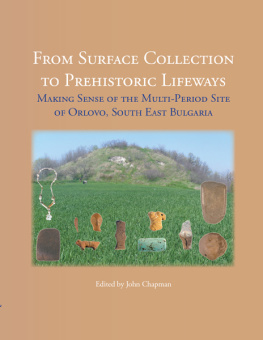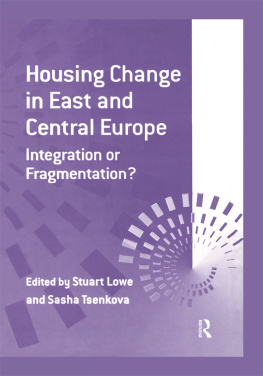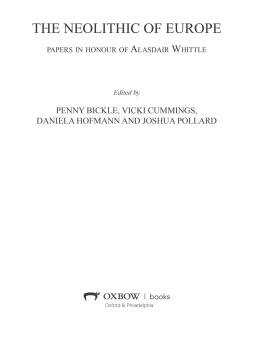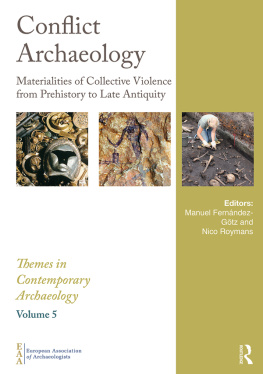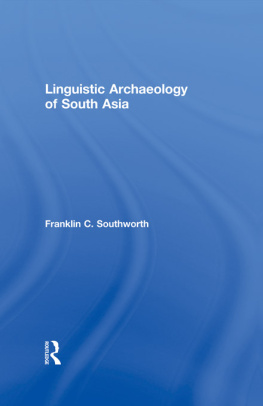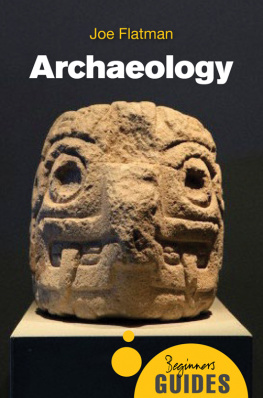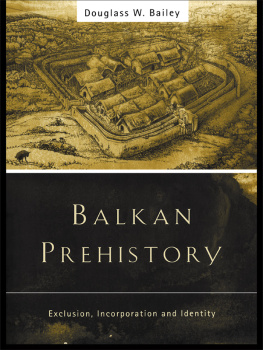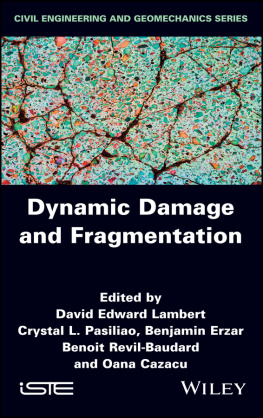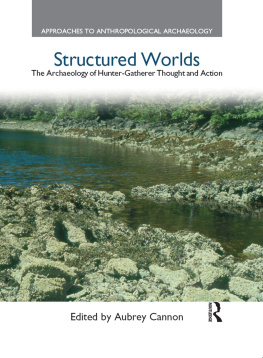
FRAGMENTATION IN
ARCHAEOLOGY
All archaeologists know that the vast majority of the objects they discover are broken; but breakage is usually assumed to have happened by accident, or after deposition. Fragmentation in Archaeology revolutionises archaeological studies of material culture, by arguing that the deliberate physical fragmentation of objects, and their (often structured) deposition, lies at the core of the archaeology of the Mesolithic, Neolithic and Copper Age of central and eastern Europe.
Fragmentation in Archaeology draws on detailed evidence from the Balkans to place the significance of fragmentation within a broad anthropological context, which links people to objects in production, exchange and consumption through the processes of enchainment and accumulation. This new dynamic is used to explain such diverse phenomena as the Iron Gates Mesolithic, mass sherd deposition in pits, the use of anthropomorphic figurines, and the wealth of artefacts found in the Varna cemetery.
John Chapmans groundbreaking study is the first to problematise the fundamental assumptions archaeologists make about how artefacts end up in fragments. It challenges all archaeologists to search for evidence of deliberate fragmentation in the material culture with which they are familiar, and to seek structured explanations in terms of local and general social practices. It will be essential reading for archaeologists, as well as being of great value for all those studying material culture and social anthropology.
John Chapman is Reader in Archaeology at the University of Durham.
FRAGMENTATION IN
ARCHAEOLOGY
People, places and broken objects
in the prehistory of south-eastern Europe
John Chapman
First published 2000
by Routledge
11 New Fetter Lane, London EC4P 4EE
Simultaneously published in the USA and Canada
by Routledge
29 West 35th Street, New York, NY 10001
Routledge is an imprint of the Taylor & Francis Group
2000 John Chapman
Typeset in Sabon by The Running Head Limited,www.therunninghead.com Printed and bound in Great Britain by TJ International Ltd, Padstow, Cornwall
All rights reserved. No part of this book may be reprinted or reproduced or utilised in any form or by any electronic, mechanical, or other means, now known or hereafter invented, including photocopying and recording, or in any information storage or retrieval system, without permission in writing from the publishers.
British Library Cataloguing in Publication Data
A catalogue record for this book is available from the British Library
Library of Congress Cataloging in Publication Data
Chapman, John, 1951
Fragmentation in archaeology: people, places and broken objects in the prehistory of south-eastern Europe / John Chapman.
Includes bibliographical references and index.
1. Antiquities, prehistoric Balkan peninsula. 2. Prehistoric peoples Balkan peninsula. 3. Balkan peninsula Antiquities.
4. Archaeology Methodology. I. Title.
GN845.B28C53 2000
939.8dc21 9938919 CIP
ISBN: 0-415-15803-6
TO BOENNA
FIGURES
TABLES
PREFACE
The origins of this book lie back in 1971, when, as a second-year undergraduate at the London Institute of Archaeology, I decided to make central and south-east Europe my area of study in later prehistory. Faithful to one of the themes of the book, material culture, I returned to London to write the greater part of it during research leave kindly granted by the University of Durham but won largely during my previous posts at the University of Newcastle upon Tyne. That my Visiting Professorship at University College London was in the Department of Anthropology is also a sign of the kind of archaeology which inspires me to write an archaeology not dominated by traditional archaeological concerns over sequence and groupings but rather informed by concerns for social action, the tension between the material and the symbolic, and the polyvocality of the material record. This work is not intended to be a grand narrative in the Childean mode, but rather one of many possible stories about the Mesolithic, Neolithic and Copper Age of essentially ten countries: Slovenia, Croatia, Bosnia, Yugoslavia, the Former Yugoslav Republic of Macedonia (FYROM), Hungary, Romania, Bulgaria, Ukraine and Moldova. For the sake of simplicity for the reader, yet contrary to the opinions of some of the inhabitants of each country, this study region will henceforth be designated as south-east Europe, a study region which, for me, equally includes parts of central and eastern Europe.
The route from London to London has been tortuous, involving many detours, its fair share of Balkan culs-de-sac, two long-term projects one in Dalmatia and the other in Hungary and two stable academic bases back in Britain. It has traversed terrain now devastated by the most serious European wars since 1945 and it has moved through political systems utterly different now from those imposed during the two decades before 1989. Research materials for this book have been gathered since 1980 but much new material has emerged from two research visits in 1995 and 1996. The new data available from major motorway rescue projects in Hungary, high-level tell excavations at Hrova and Borduani in Romania, reanalysis and new scientific analysis of the Iron Gates Mesolithic in Serbia and Romania and the amazingly rich assemblages from total tell excavations in Bulgaria combine to produce a qualitatively different kind of data base. These new results permit the questioning of old frameworks and the deconstruction of traditional assumptions. The result is a volume on social practices in which the fragment is returned to its true place of importance in European prehistory.
ACKNOWLEDGEMENTS
In the case of a book such as this, it is hard to know where to begin to express my thanks to friends, colleagues and institutions for their support for me and their many kindnesses to me. Long-term friends whose ideas have been consistently stimulating include John Nandris, Ruth Tringham, Mike Rowlands, Anthony Harding, John Barrett, Jnos Makkay, Nandor Kalicz, Pl Raczky, Eugen Coma, Ghia Lazarovii and Milutin and Draga Garaanin. My appreciation of the Serbian Neolithic was aided by many Serbian colleagues, not least Nikola Tasi, Dragan Srejovi, Zaga Letica and Dusan Bori, who sent me literature. The late Alojz Benac and Borivoj ovi provided valuable data on the Bosnian Neolithic, Snjeana Vrdoljak kindly sent me recent books on the Sava valley Neolithic and Irena Mimik posted me copies of obscure articles. Natasha Venclova also sent me valuable material on the Czech and Slovak Neolithics. During my Dalmatian fieldwork, I benefited greatly from ime Batovi and Slobodan aes ideas and enthusiasm; the Ljubljana University departmental staff, especially Boidar Slapak, Mitja Gutin, Miha Budja and Predrag Novakovi, gave me many opportunities for discussion.
During the Anglo-Hungarian Upper Tisza Project, 1 discussed the Hungarian Mesolithic, Neolithic and Copper Age with Pl Raczky, Feri Horvth, Robi Kertsz, Pl Patay, Kati Br and many others. Tibor Kovcs and Pl Raczky kindly presented me with recent publications. Andrs Figler was kind enough to show me the M-l rescue sites and material from GyrSzabadrt domb and Ildiko Egry showed me the GyrPapai vam materials. Katalin Nagy showed me the finds from the Kknydomb and much other unpublished material. Istvan Ecsedy showed me Neolithic materials from Lnycsk and Zengvrkony and many local sites.



